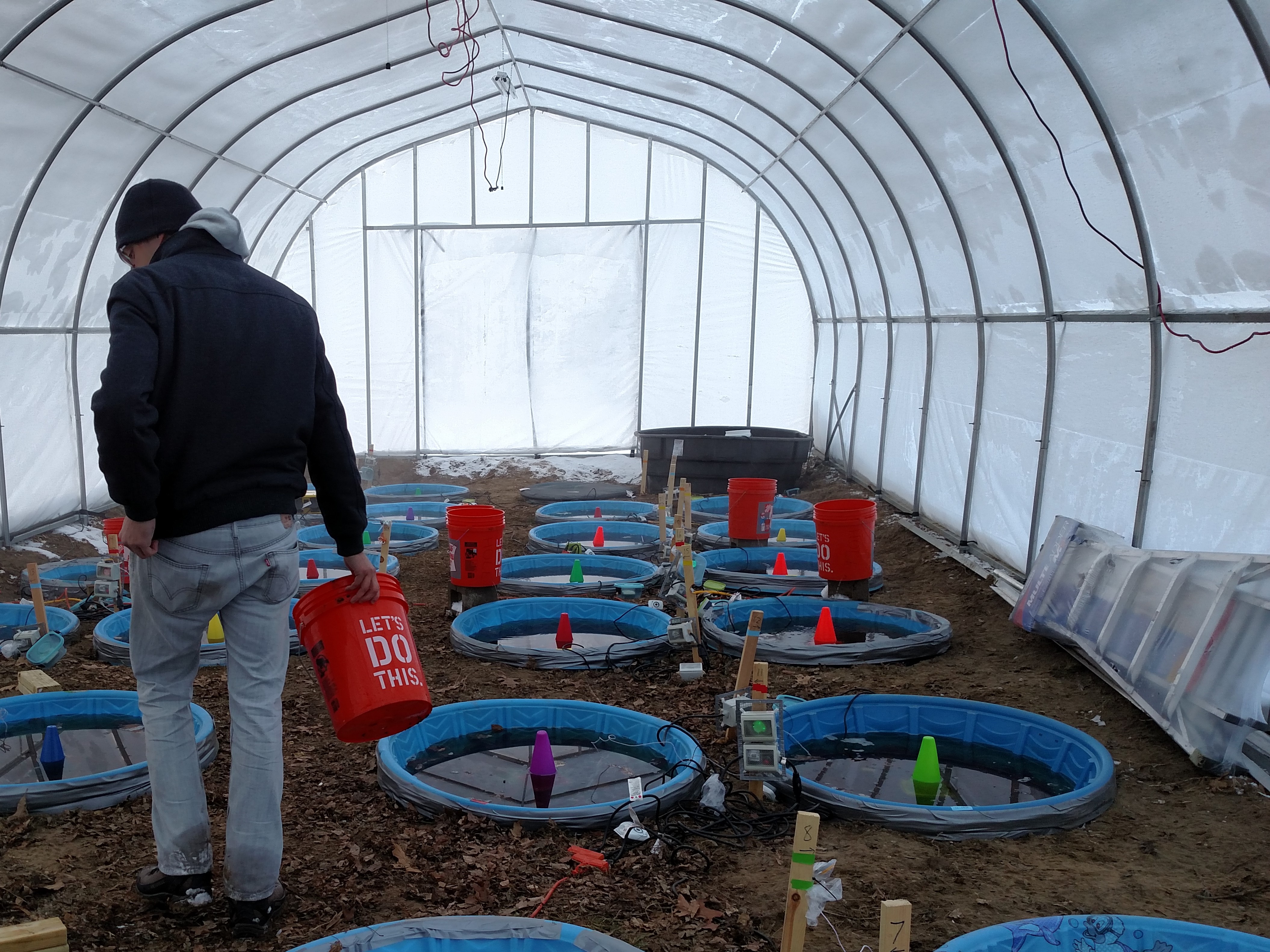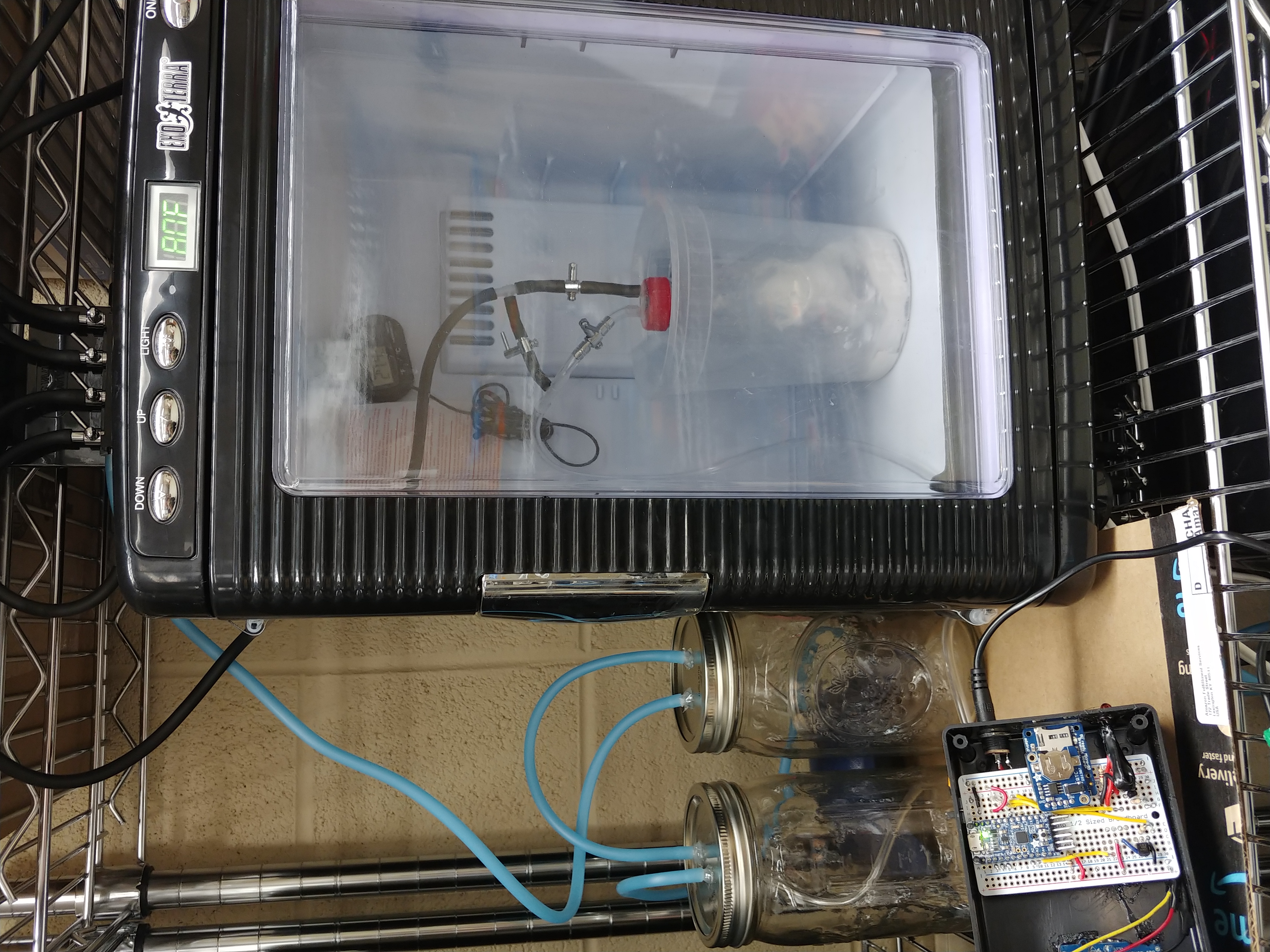Research Interests
Infectious Disease Ecology: Temperature and Metabolism
Temperature effects on species interactions, especially parasitism, are difficult to predict. Both host and parasite have independent responses to temperature and those temperature effects are typically non-linear. Additionally, the resulting measurement of parasitism is the result of the mismatch between the performance of two separate species. The metabolic theory of ecology (MTE) postulates that all physiological and ecological rates are limited by organism metabolic rates, which scale with body mass and temperature. Thus far, I have been exploring the use of MTE-derived mathematical models to describe the temperature dependence of host and parasite metabolic rates for snail-borne trematodes in amphibians (Ribeiroia ondatrae), and birds & humans (Trichobilhariza & Schistosoma spp.), and an amphibian fungal pathogen (Batrachochytrium dendrobatidis) as model systems.
Core Questions
- How can we distinguish the effects of temperature on parasite infectivity versus host resistance to infection?
- Can we use metabolic proxies such as respiration rate or other measures of performance to generate predictive models of host-parasite interactions in variable-temperature environments?
- How can we take into account the thermal history of the host and parasite in these models for disease outcomes?

Large array of temperature-controlled experimental mesocosms for preliminary Schistosoma and Batrachochytrium work.
Avian Schistosomes
Avian schistosomes are snail-borne trematode parasites that normally infect waterfowl as their definitive hosts. The free-swimming larvae of Trichobilharzia and other species (called cercariae) seek out and penetrate the skin of the bird, but sometimes penetrate humans resulting in a nasty, itchy rash called swimmer's itch. Swimmer's itch is a growing problem throughout Michigan and other parts of the world that impacts recreational use of water, impacting the local economy. It is an important organism to study as it is a good local model system to study the potential environmental drivers of abundance and distribution of this and other snail-borne parasites. My past work consisted of conducting a large-scale spatial survey utilizing local volunteers as community scientists to address my research questions.
Core Questions
- What are the primary ecological drivers that lead to high levels of swimmer's itch at some sites but not others? How do these change at different spatial scales?
- How do changes in temperature, wind, water currents, and other factors influence daily variation in swimmer's itch risk?
- Other strategies to reduce swimmer's itch occurrence and/or impacts in MI lakes (i.e., preventing skin penetration)
Field sampling during our 2016 avian schistosome distribution study.
Open Source Hardware and Software
Many of my research projects have led to the development and use of open source alternatives to commerical products that have either been too limited in capability, too cost prohibitive, or too technically demanding. Most notably, I designed and built an array of flow-through respirometry devices that were under $200 each to measure pulmonary activity in diving frogs. I use open source platforms such as Arduino and Raspberry Pi to interface with readily available components and log data directly to on-board storage not only for their ease of use, but for their ability to be shared with others. There are myriad potential uses for new open source technologies in modern disease ecology, including wireless interfacing and sensor networks, and precise temperature-controlled treatments. I am always seeking out potential collaborations in this area.

Photo of our open-source flow-through respirometry device measuring the air oxygen consuption of a diving frog.